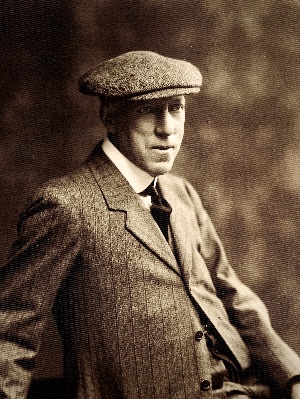Pearman, William
Dancer
Collection date: Sept 1922
Area: Oxfordshire
William John Pearman of Kirtlington morris (1857-1929): Kirtlington is 12 miles due N of Oxford. William Pearman met Sharp on 21 Sept 1922 when 3 morris tunes were collected (‘Jockey to the Fair’, ‘Trunkles’ and ‘Old Woman tossed up’ FT4925ff). The original Kirtlington side ceased dancing soon after the last Kirtlington Lamb Ale (c1862). William’s father Robert Walton Pearman (b1825) was a member of that side. William himself was part of a revival side that performed sporadically in the 1870s and 1880s. Sharp commented in Folk Dance Notes 4/100 that ‘Pearman danced extraordinarily well, very lightly with an excellent morris step.’ William was 65 by then.
William said he was taught by his father and in fact he had 4 uncles who were also dancers – James Pearman b1818, Anthony b1821, Richard b1827 and Thomas b1831. He never knew his grandfather Thomas Pearman, who was also a dancer (b1781-d1856).
William John Pearman was baptised on 9/8/1857 at Kirtlington, 3rd of 5 sons of Robert W Pearman, agricultural labourer and his wife Caroline (daughter of Edward Timms, pipe and tabor player). He married Mary Hannah Herbert at St Mary’s Kirtlington on 1/9/1881 and they had 6 children. William was an agricultural labourer from at least the age of 13 to 33. In 1901 he was a ‘groom (domestic)’ and in 1911 a ‘clinker attendant’ in a cement works. He lived his whole life in Kirtlington and died there in 1929.
Sharp did not publish any Kirtlington dances in his Morris Book series but they are in Lionel Bacon’s ‘Handbook of Morris Dances’ (1974 p225). When the dances were reconstructed in 1979 by Paul Davenport of Green Oak morris and Tim Radford of Adderbury morris, they noted that others had investigated the Kirtlington tradition before Sharp. Percy Manning in 1894 had reported on the custom of the Lamb Ale, which was held on Trinity Monday (8 weeks after Easter, 1 week after Whit Monday). There’s a possible reference to the Lamb Ale in 1679 but a definite account from 1723. Sharp wrote Manning’s descriptions up as Folk Dance Notes 1/124-128.
Mary Neal had travelled to Newbury in 1910 to interview James Hawtin, 72, an old Kirtlington dancer who danced ‘Jockey to the Fair’ for her (vwml CC/2/325 p2) but she did not publish anything in her ‘Esperance Morris’ Book vol2 when it came out in 1912. Finally George Butterworth was sniffing around in April 1912 and interviewed Alfred Cato (1837-1918) of the ‘Kirdlington’ (sic) side. He wrote: ‘(Cato) tried to whistle the tune (of Princess Royal) but it turned out to be Shepherd’s Hey, so I don’t fancy him as an authority. He was very vague in all his information’ (ref: GB/10 p9). However, Cato did volunteer to Butterworth the name of Caroline Pierman (William Pearman's wife), which Sharp, of course, eventually pursued in 1922.
For the modern-day revival of Kirtlington morris side & Lamb Ale event, see article in Morris Matters vol13 pp2-6 1993. https://www.morrisfed.org.uk/wp-content/uploads/2018/01/MM-13-1.pdf
One distinctive feature of the Kirtlington style is the ‘hockle-back steps’, described so well to Sharp by William Pearman in 1922 (Folk Dance Notes 4/101): ‘In the hockle he turned his ankles in (as in the hop backstep) and screwed them, swinging freely out to the side – no sway of body, or very little.’ Youtubes exist for you to judge. See also https://kirtlington-morris.org.uk

